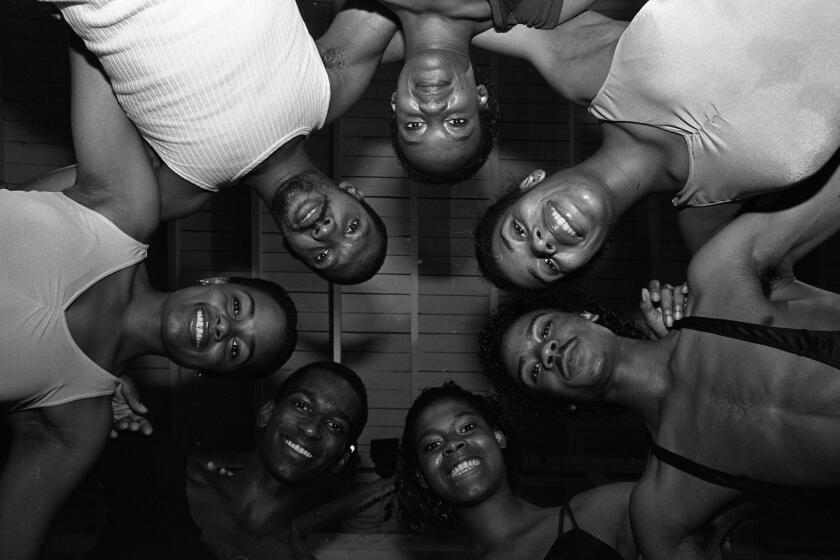Black middle class: Getting used to isolation
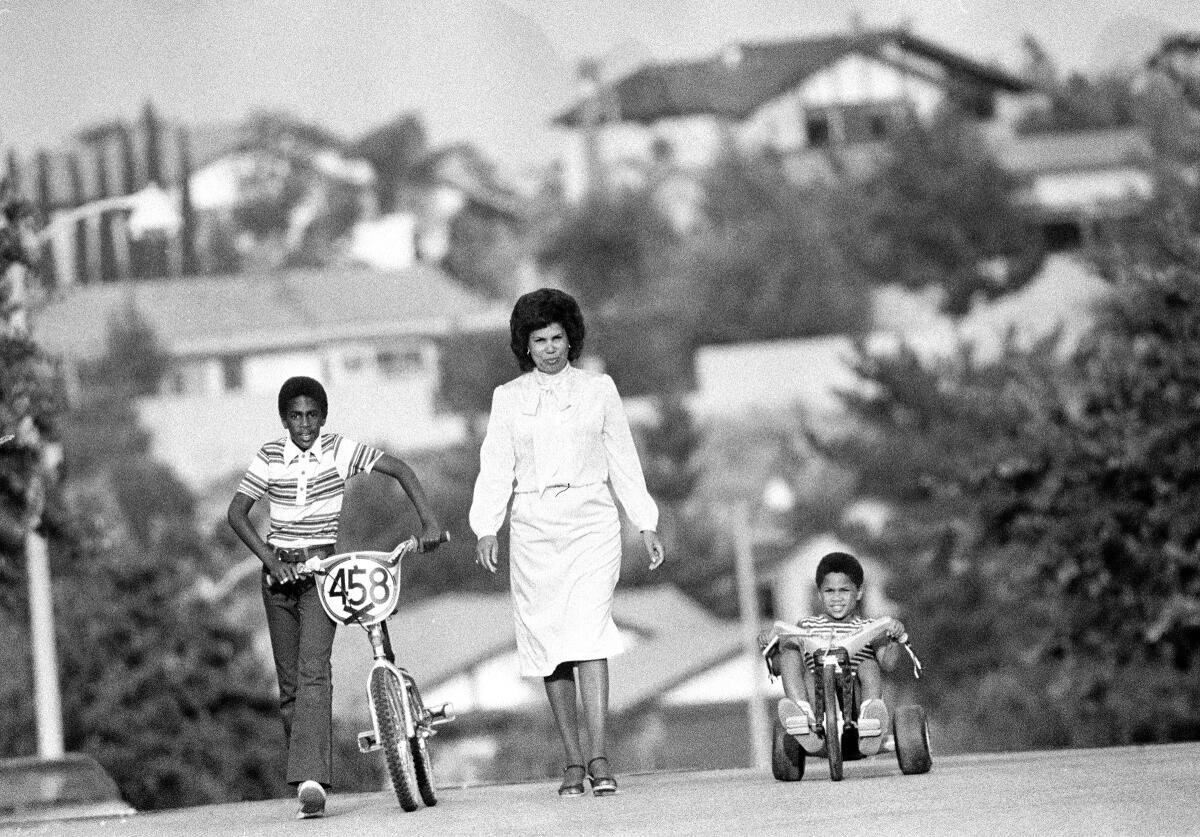
- Share via
This story originally ran in 1982 as part of the “Black L.A.: Looking at Diversity” series. We have preserved the original text in order to provide an accurate account of the work in print.
What Darlene Lewis remembers most about her first glimpse of the San Fernando Valley is the feeling that she could never be comfortable in a place that was “so white, so ‘middle class.’”
It was 1969, and she and a college classmate were the only blacks at a house party in Canoga Park, a community at the far western end of a valley that was then 99% white.
“It seemed so far away from everything, and so sterile,” Lewis recalls. “I remember saying, ‘I’d never live in the valley.’”
Ten years later, Darlene and her husband, Meredith, bought a home in that same community. Today, the couple and their two daughters live 10 miles to the west in Agoura, a Ventura County community that also is predominantly white.
They have not regretted their move.
The Same Reason
Like other black suburbanites, the Lewis family was drawn to the suburbs for the same reasons that whites for years have sought sanctum there: proximity to their jobs, lower prices for newer homes that hold their value better, less crowded schools with higher student achievement scores and less crime.
Suburban living offers a challenge to blacks that white suburbanites never have to face: coping with feelings of cultural isolation and alienation that are implicit in a community so completely dominated by whites.
Still, the lure of suburbia continues to attract blacks in modest but steadily increasing numbers.
“Circumstances just landed us here,” said Darlene Lewis, personnel director for a West San Fernando Valley manufacturing company. She and her husband, a television news reporter, were living when he accepted a job transfer to Burbank. The couple decided that they wanted a home nearby in “something that resembled an integrated neighborhood.”
In the summer of 1982, The Times published a series on Southern California’s Black community called “Black L.A.: Looking at Diversity.”
Stayed in Suburbs
Favorable housing prices and financing led them to the valley, and when the couple decided to move again two years later, financial considerations kept them in suburbia.
“We didn’t know where we wanted to move, but we knew we needed more space and we knew what we could afford,” she said. The family settled on a spacious, two-year-old tract home in an upper-middle class area of Agoura for $120,000.
After moving in, they were surprised to learn that six black families lived within blocks of them. The Lewis family has a black baby sitter, has attended a black church in suburban Simi Valley and Darlene has belonged to a black women’s organization based in the Conejo Valley.
“Once you start talking to people and get to know them, you realize there’s a whole network of blacks out here in what’s called the suburbs,” Darlene Lewis said. “They’re scattered around but they’re here.”
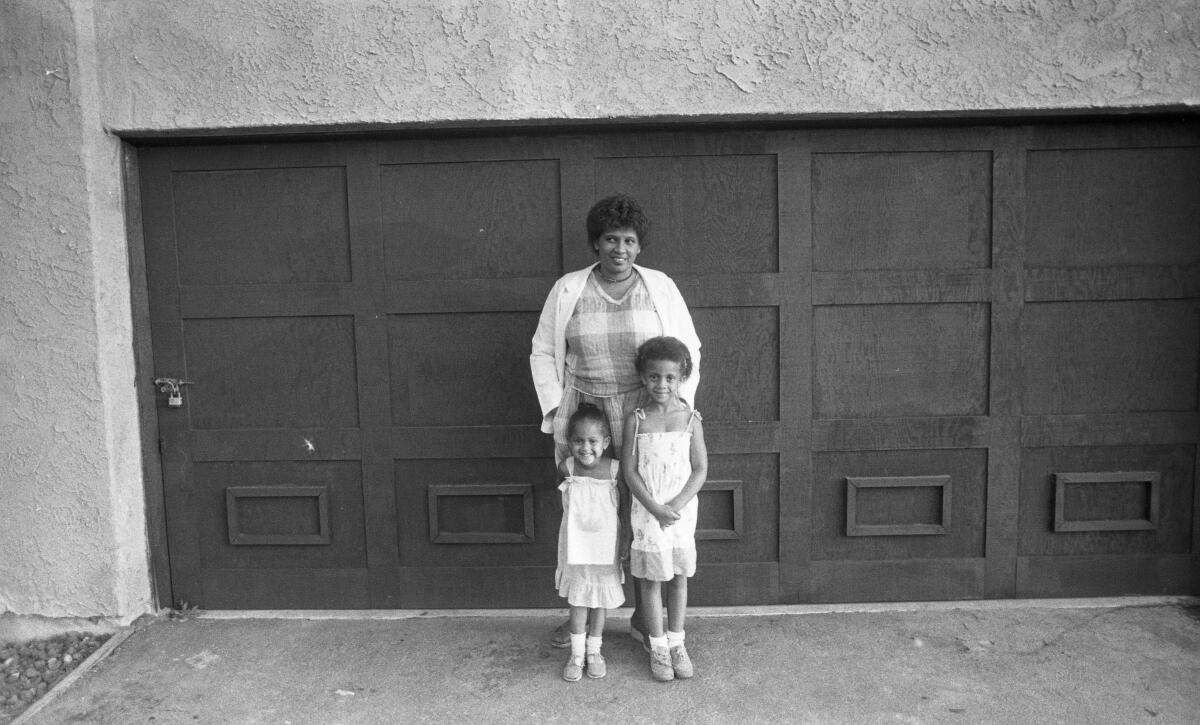
Census figures support that observation.
In the San Fernando Valley in 1960, for example, there were fewer than 10,000 blacks among the valley’s 708,900 residents. And restrictive housing covenants kept most of those blacks in Pacoima, the valley’s only black enclave.
After racial covenants were ruled unenforceable, the valley’s black population began to increase and blacks migrated from Pacoima to previously forbidden valley communities such as Northridge and Sylmar.
Census figures show the number of blacks in the valley almost doubled from 1960 to 1970, and then doubled again in the next ten years. By 1980, 32,200 or 3%, of the valley’s 1,017,500 residents were black.
Orange County, another model of white suburbia, shows similar pattern. Blacks were concentrated for years in the city of Santa Ana, in the center of Orange County, and only recently began dispersing to the far reaches of the county. Just as in Pacoima, Santa Ana’s black population has decreased while Orange County’s has increased.
Number Increasing
Lured by jobs, increasing numbers of blacks have moved to Orange County during the last 20 years. Although blacks still are a meager portion of the county’s total population, their numbers have increased from 3,171, or less than ½ of 1% in 1960, to 25,300 or slightly more than 1% of the 1980 population of 1,931,600.
For some suburban blacks, their homes are nothing more than a place to hang their hats. Most of their social life remains tied to the largely black South-Central Los Angeles area, where families and friends remain.
The majority of black suburban dwellers, however, seem to have settled comfortably into their neighborhoods. They are carving out their own niches in the midst of communities that, as recently as 20 years ago in some areas, sanctioned property deeds that declared “No part of said real property shall ever be leased rented, sold or conveyed to any person who is not of the White or Caucasian race …”
Today, there is little evidence of overt discrimination against black suburbanites. “You’re aware of the difference,” said Darlene Lewis. “You know when you go out to a nice restaurant, for instance, you’ll probably be the only black there.”
Doesn’t Feel Awkward
“But no one has ever made me feel awkward. I haven’t gotten any great stares, everybody’s been courteous. Maybe I’m more self-conscious than the people I think are noticing me.”
Indeed, black faces at suburban shopping centers, restaurants and parks seldom cause the uproar they did in 1967 when Edgar and Faye Law moved with their four young children to an all-white Canoga Park neighborhood.
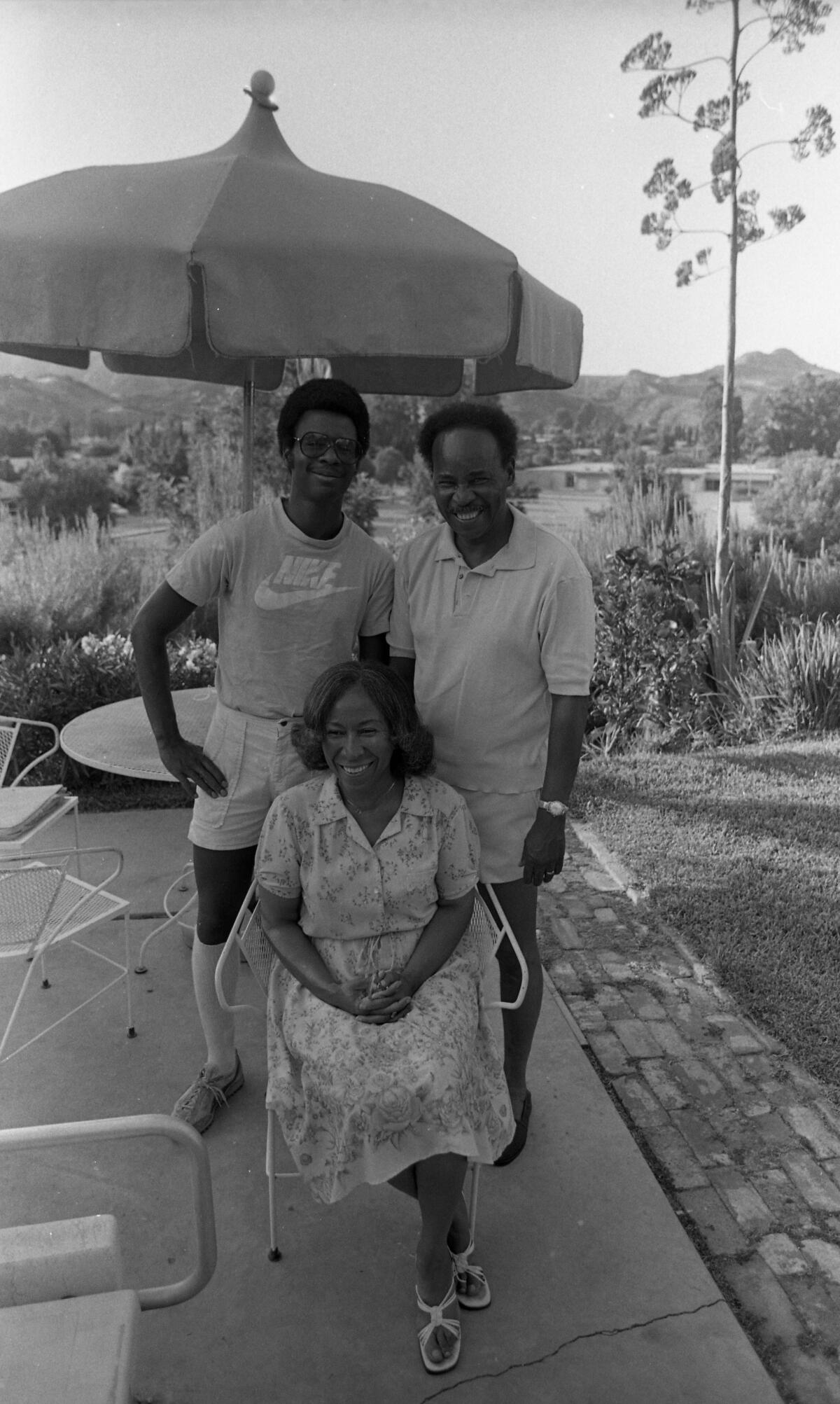
“People were curious,” Faye recalls, smiling ruefully at the memory. “I had to pre-register the children at the neighborhood school, so I thought, ‘Why don’t I just get all the kids together and we’ll stroll over to the school. Then all the neighbors can see this strange new family they’ve heard so much about.’”
Their walk was uneventful until about a block from the school. Then, two little white boys playing in a yard noticed the caravan.
“They stared at us for a minute,” Faye recalled, “then one said to the other ‘What kind of people are those?’ ‘Why, they’re Negroes!’ his little friend answered. I just smiled at them and we kept on walking.”
In their 15 years in the San Fernando Valley—two in Canoga Park and 13 in Northridge—the Law family has never felt any direct expression of racial hostility, “except for a few name-calling incidents involving the kids,” Faye said.
Carolyn Brown, a black deputy probation officer, moved four years ago with her two sons from Inglewood to Northridge’s Porter Ridge neighborhood, nestled in the foothills of the Santa Susana Mountains.
“I like where I’m living, and the way my family has made the adjustment to the valley,” she said.
Good Opportunities
“I’m not trying to be white—I never have. And I’m not trying to make my kids white. I’m trying to give them a nice home, good opportunities and advantages, but I’m not trying to make them white.”
She bought her home after reading a newspaper article listing student achievement scores for Los Angeles elementary schools, and driving through the neighborhoods that surrounded schools with the highest scores—including the upper middle-class neighborhood into which she moved.
There is only one other black family nearby, yet Brown said she feels comfortable.
Her sons are active in local sports leagues and popular with their friends, and she has taken a leadership role with the local Chamber of Commerce and among neighborhood parents.
“We’ve never had any problems out here,” she said. “I guess (my neighborhoods) feel that if you can afford to live in the neighborhood you’re OK.”
In recognition of the increasing black presence in the suburbs, outlets for goods and services peculiar to blacks have increased. Suburban blacks no longer have to travel to black neighborhoods for specialty items such as hair care products.
“Now, it’s really just a matter of knowing where to look for the things you need,” said Joyce Bobo, who lives in Granada Hills. “You learn where to get them, or you learn to do without.”
Bobo has spent 22 years in the San Fernando Valley—10 in Pacoima and 12 in nearby Granada Hills. But she has found no similarly easy to solution to perhaps the biggest problem confronting blacks in the suburbs: a feeling of isolation from the black community and friends and family there.
Craving for companionship
Bobo teaches at Pacoima Junior High School, is friendly with her co-workers, most of whom are white, and has several white acquaintances.
But that does not satisfy the craving she feels for black companionship and fellowship, nor does it blunt her feeling that “you can never quite blend in out here.”
“It just gets rather tiresome being the ‘only’ wherever you go,” she explained. “You go along doing your shopping and not thinking about being black or being different, but all the time, you know you stick out like a sore thumb.”
In Orange County, where blacks are even fewer, the feeling of isolation is more pronounced. And it is compounded by the distance between Orange County and Central Los Angeles that makes it impractical to return to the city routinely for socializing.
“Most blacks in Orange County are hurting for social contact with other blacks,” said Ron Lunceford, a black Irvine psychologist who has lived in Orange County for 15 years.
“Especially for women and singles, it’s lonely. You go day after day and you don’t see anybody like you. You can adjust to living here, and most of us makes that adjustment very well, but it’s still lonely.”
Inherent in the problem of loneliness and isolation is a question that many black suburban parents must ultimately ask: What impact will growing up in a virtually all-white society have on their children?
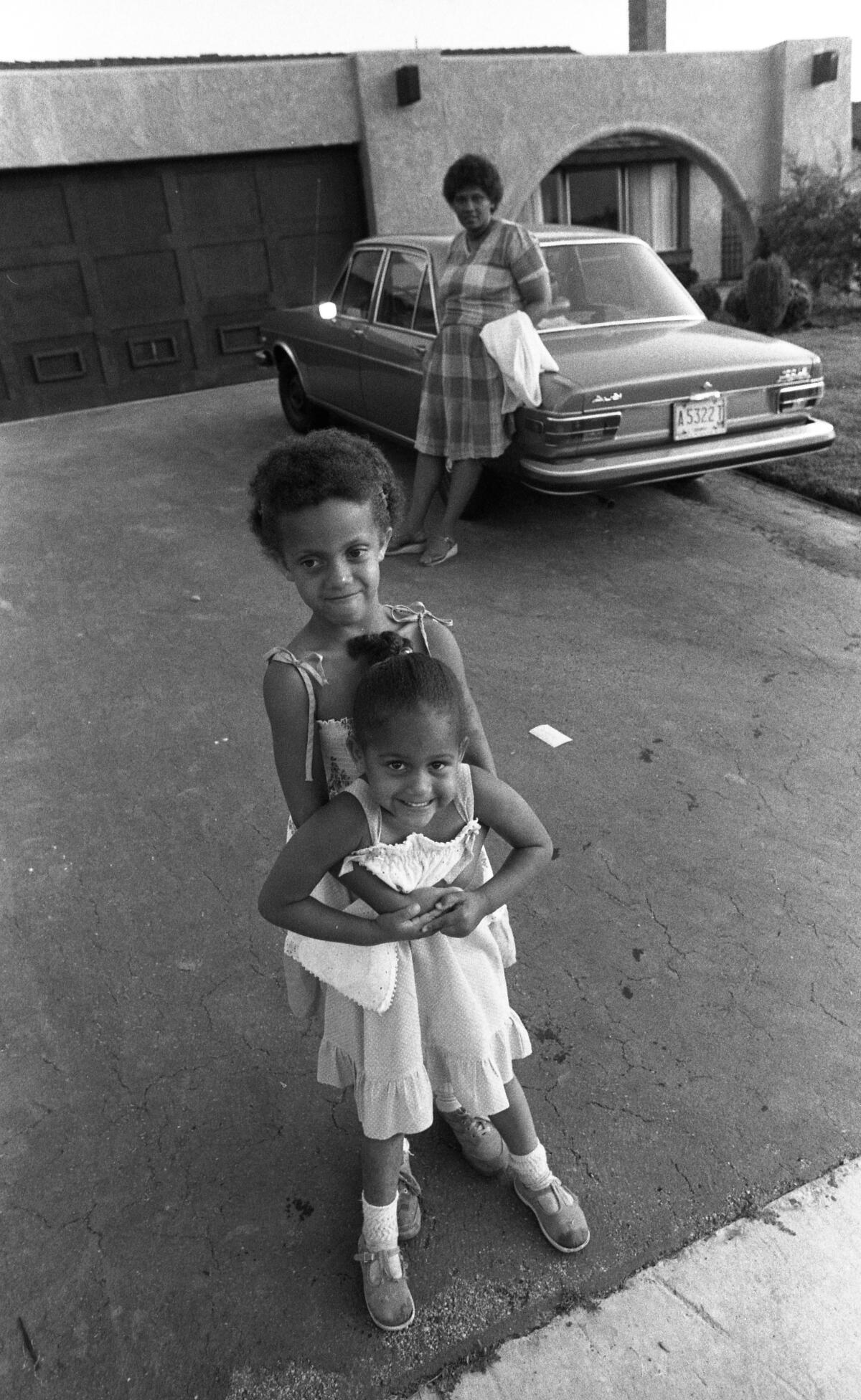
“It doesn’t bother me at this stage of their lives,” said Darlene Lewis, whose two daughters are 6 and 4. “But at some point down the line, we may have to decide whether to stay (in the suburbs) based on the kids’ adjustment.”
She has seen the daughters of black friends in the valley suffer through dateless teen-age years and heard her baby sitter’s horror stories about the social stigma of being the only black girl in her school.
“It doesn’t seem to be as hard for boys,” Lewis said. She said they often win acceptance and break racial barriers through participation in sports and can interracially date without raising eyebrows. “But it can be really tough on the girls.”
The social difficulties of growing up black in white surroundings may be the least of the problems facing black suburban youngsters, said James Law. James, middle son of Faye and Edgar Law, has lived 15 of his 21 years in white neighborhoods in the San Fernando Valley.
“Compared to some of the other internal kinds of things you go through, the social problems are nothing,” he said.
All through elementary school, James and his brothers and sisters were the only blacks in their schools. “Then, I didn’t really feel any different,” said James, a handsome young man with precise diction and a friendly, open manner. “My friends were all white and always had been, and I didn’t think anything of it.”
That changes when James entered junior high school in Northridge. For the first time in his young life, he came into contact with black children from the Central City, who were attending the school through a voluntary busing program.
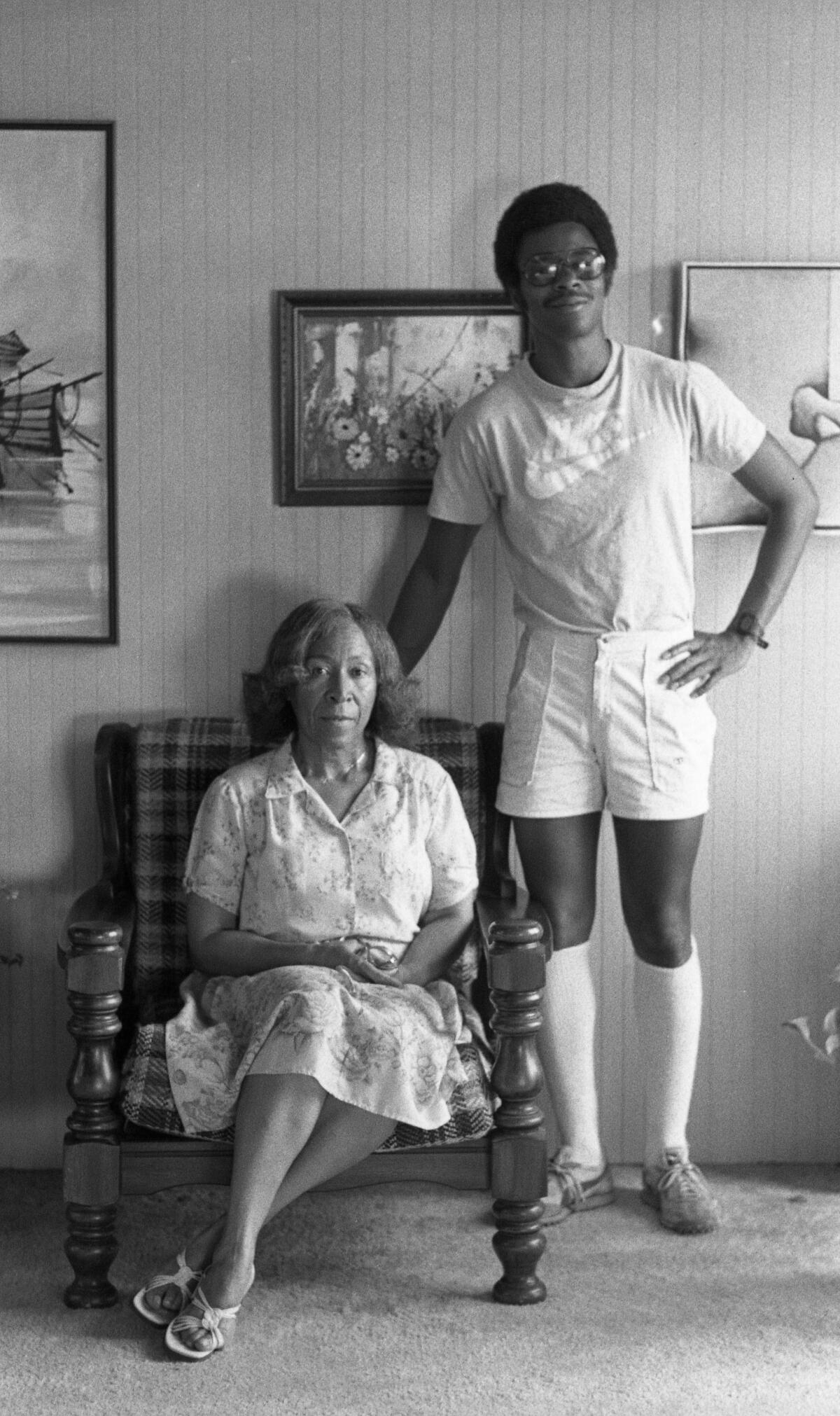
James felt unable to relate to his black classmates, and that made the next four years the most traumatic of his young life, he said.
“I had more in common with my white friends than I did with the black kids, and that really bugged me,” James said. “I thought the black kids looked at me as some kind of a jerk or a fool—‘Look at him hanging around all those white kids.’ It really bothered me.
‘Looking Through Me’
“I remember when I’d see a group of blacks walking down the hall toward me, I couldn’t look them in the eye. I felt like they were looking right through me—like they could see that inside, I was really white.”
Never having any black friends, James felt unsure of his ability to relate to his black classmates. “I didn’t know whether to ‘act black,’ which I didn’t know how to do, or to ‘act white,’ which was all I’d ever known. I felt guilty for not having grown up in a black neighborhood.”
In high school, Law gradually overcame his unease by participating in sports alongside his black classmates. “I realized that I’ll never be able to ‘talk black’ or ‘act black,’ no matter how hard I try. And I don’t have to. All I have to do is be myself, and either be accepted or rejected for what I am.”
He says he has recovered from the trauma of those years, and is proud now of his ability to relate to “anybody—black, white, green, striped.”
“When I look back, I wish I’d handled things better—been more myself and tried to be friendlier to the blacks or something,” he said. “But then, I just didn’t know … I felt so alone.
“I couldn’t talk to my (white) friends about it. They just wouldn’t have understood. Don’t get me wrong … my friends are really fantastic people. I just wish some of them would have been black.”
Paula Watkins also grew up attending all-white schools in the San Fernando Valley and knows how easy it is for a black person to lose a sense of identity growing up in the suburbs.
Because of her experience, she and her husband, William, were determined to find a neighborhood where their 7-year-old son, Scott, could socialize with other black children.
After opting to live in the valley to be near William’s job as employment officer at California State University, Northridge, they settled on a home in a working-class Mission hills neighborhood in the north end of the valley. Their neighborhood school is integrated, even though their immediate neighborhood is almost completely white.
“What we don’t want is for our son to get wrapped up in the phenomenon of being a novelty,” Paula Watkins said. “Growing up out here, it’s important that you not accept the notion that you are somehow special—‘the black that has arrived.’”
Both parents are intent on trying to pass along to Scott a sense of pride in being black, or as William Watkins explains, “an understanding that he’s part of a larger experience: that there’s a whole heritage and history that he’s involved with by being black.”
They realize that message will get little reinforcement in the community where they live. So they work hard at maintaining ties to William’s family and friends in Watts, where he grew up.
One group of black women in the San Fernando Valley formed a service club in 1970 that has among its aims providing opportunities for black children to socialize with one another.
Stuck to Schoolmates
“We tried to expose our kids to other blacks, yet they lived in a white world,” remembers Ken Kelly, whose family was one of the original members of the group.
“That way, they could pick their friends from among the neighbor kids, or the (black) friends of their parents. But it seemed it was always easier for them to gravitate toward their schoolmates and neighbors because they were closer.”
Kelly and his wife, Loretta, raised two sons in their 20 years in the valley and feel satisfied that suburban living had more positive than negative effects on their sons.
But Kelly also realizes how alienated from the larger black community a black youngster can become growing up in the suburbs.
“My own son, when we took him to the Watts Festival as a teen-ager several years ago, said he was uncomfortable going ‘down there’ because all his life he’d heard about the kinds of negative things that go on there.
“That really hurt me when he said it, but I understood. He grew up in an orientation where, right away, when you mention Central Los Angeles you get bad vibes. A lifetime of that, and he was programmed, the same way white kids are.”
But, if his son picked up the same attitudes as his suburban white friends, he was also exposed to the same opportunities and advantages, Kelly believes.
“Ideally, I’d like them to be raised in a very mixed community, but it didn’t turn out like that. If I had to choose between an all-black and an all-white community, with every effort to tie into the black community.”
In the black community, Kelly said, there are fewer connections to the “bigger system” that controls the economic purse strings. “Let’s face it,” he said, “the whites are in control of the bigger system and being able to connect to that system has been a useful advantage.”
While black youngsters in inner-city neighborhoods were suffering from a lack of jobs, Kelly’s teen-age sons “could work any summer they wanted to” because of the family’s close relationship with several valley business owners, Kelly said.
“And, because my sons saw so much success around them, they learned not to put limitations on what they can do,” he said. “In many ways, my kids were spared that kind of negativism that the black community unfortunately has to bear.”
But, there is nothing magic about suburban living that assures future success for black children who are products of suburbia, contends William Watkins, the Mission Hills father of two.
“We realize our children will be living in a society where white people control, and there may be an advantage in having learned on a day-to-day basis to interact with whites,” Watkins said.
“But I don’t suggest to any black family that they rush out here to do this for that reason. Enlightened black parents can do an equally admirable job in South-Central or out here. There’s nothing inherently right in either place.”
